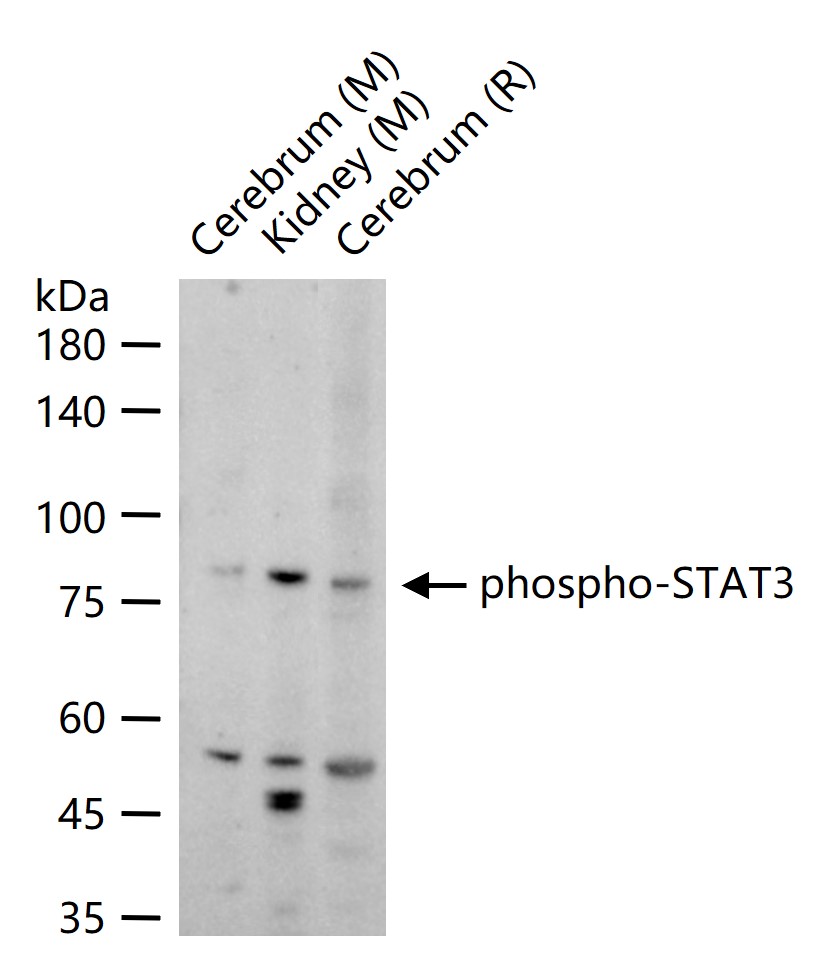sales@bioss.com.cn
techsupport@bioss.com.cn
400-901-9800
Host: Rabbit
Target Protein: phospho-STAT3 (Tyr705) Rabbit pAb
IR: Immunogen Range:AP(p-Y)LK
Clonality: Polyclonal
Isotype: IgG
Entrez Gene: 6774
Swiss Prot: P40763
Source: KLH conjugated Synthesised phosphopeptide derived from human STAT3 around the phosphorylation site of Tyr705:AP(p-Y)LK
Purification: affinity purified by Protein A
Storage: 0.01M TBS (pH7.4) with 1% BSA, 0.02% Proclin300 and 50% Glycerol. Shipped at 4℃. Store at -20℃ for one year. Avoid repeated freeze/thaw cycles.
Background: The protein encoded by this gene is a member of the STAT protein family. In response to cytokines and growth factors, STAT family members are phosphorylated by the receptor associated kinases, and then form homo- or heterodimers that translocate to the cell nucleus where they act as transcription activators. This protein is activated through phosphorylation in response to various cytokines and growth factors including IFNs, EGF, IL5, IL6, HGF, LIF and BMP2. This protein mediates the expression of a variety of genes in response to cell stimuli, and thus plays a key role in many cellular processes such as cell growth and apoptosis. The small GTPase Rac1 has been shown to bind and regulate the activity of this protein. PIAS3 protein is a specific inhibitor of this protein. Mutations in this gene are associated with infantile-onset multisystem autoimmune disease and hyper-immunoglobulin E syndrome. Alternative splicing results in multiple transcript variants encoding distinct isoforms. [provided by RefSeq, Sep 2015]
Size: 200ul
Concentration: 1mg/ml
Applications: WB=1:500-2000
Cross Reactive Species: Mouse,Rat
For research use only. Not intended for diagnostic or therapeutic use.
